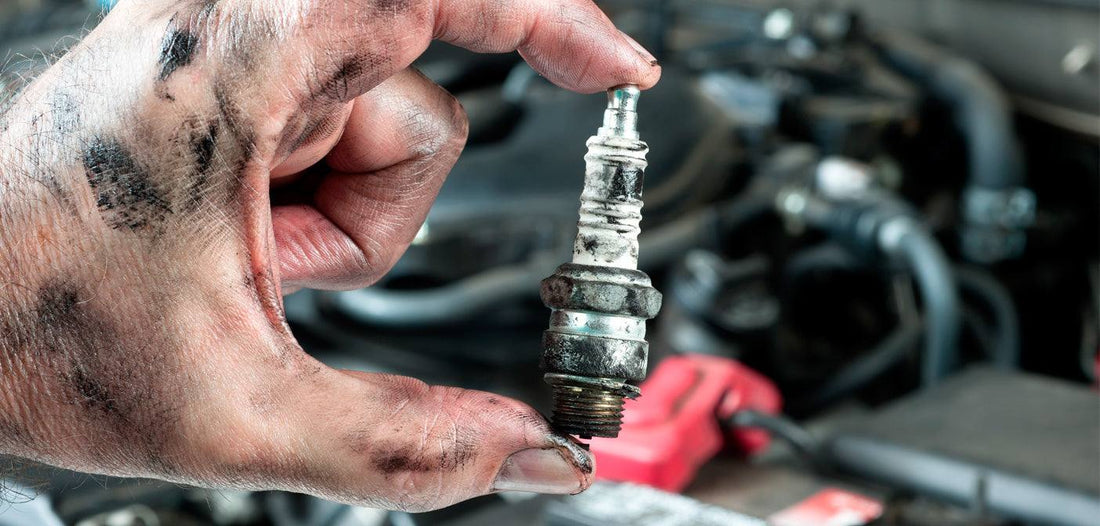
How to Test for Spark on an Engine
Share
How to test a spark plug for spark
Testing for spark on an engine is an essential diagnostic step for troubleshooting ignition-related issues. Whether you're a seasoned mechanic or a DIY enthusiast, knowing how to perform spark testing can save you time and frustration. This comprehensive guide will walk you through the process of testing for spark on an engine, providing you with the knowledge and confidence to identify and resolve ignition problems.
Tools Required
- Spark tester: A spark tester is a device used to simulate spark in the ignition system.
- Spark plug socket and wrench: These tools are necessary for removing and inspecting the spark plugs.
- Insulated gloves: Insulated gloves protect you from electric shock and heat while working on the engine.
- Safety goggles: Safety goggles safeguard your eyes from any debris or sparks that may occur during the testing process.
Step-by-Step Guide
- Prepare the Engine
Before starting the spark test, ensure the engine is turned off and the ignition key is removed. If the engine was recently running, allow it to cool down before proceeding. This step is important for your safety.
- Locate the Spark Plugs
Identify the spark plugs, which are typically connected to thick spark plug wires. Depending on the engine configuration, you may need to remove a cover or access panel to reach the spark plugs. Consult the engine's manual if you're unsure about the location of the spark plugs.
- Inspect the Spark Plug Wires
Carefully examine the spark plug wires for any signs of damage or wear. Over time, these wires can deteriorate, leading to weak or no spark. If you notice any cracks, breaks, or burns, replace the wires before proceeding with the test.
- Connect the Spark Tester
Attach the spark tester to one of the spark plug wires. The spark tester simulates the spark that would normally occur in the combustion chamber. It allows you to check the strength and consistency of the spark.
- Ground the Tester
Find a suitable grounding point on the engine, such as a metal bracket or engine block. Connect the ground wire of the spark tester to the chosen grounding point. This grounding ensures a complete circuit for the spark to occur.
- Observe the Spark Tester
With all safety precautions in place, crank the engine and observe the spark tester. A strong, blue spark indicates that the ignition system is functioning correctly. The spark should be consistent and steady. If you don't see a spark or notice a weak, yellow spark, there may be an issue with the ignition system.
- Repeat the Test
For a thorough diagnosis, repeat the spark test for each spark plug wire. This helps identify if any specific cylinder is experiencing ignition problems. Make sure to remove and reconnect the spark tester between each test.
- Record the Results
Keep a record of the spark test results for each cylinder. This information can be helpful in identifying patterns or inconsistencies in the ignition system. It also aids in troubleshooting and discussing the issue with a professional, if necessary.
- Replace Faulty Components
If you have determined that there is a lack of spark or weak spark on one or more cylinders, it's crucial to inspect and replace faulty components. The most common culprits are spark plugs, ignition coils, or the ignition control module. Consult the engine's manual or seek professional advice to ensure proper replacement and installation.
- Seek Professional Help if Needed
If you are unable to diagnose the problem or if the issue persists even after replacing the faulty components, it's recommended to seek professional help from a certified mechanic. They have the expertise and specialized diagnostic tools to accurately diagnose and repair complex ignition system problems.
- Maintain Regular Ignition System Maintenance
Prevention is always better than cure. To avoid ignition problems, it is essential to follow the manufacturer's recommended maintenance schedule. Regularly inspect and replace spark plugs, ignition wires, and ignition components as per the specified intervals. Proper maintenance ensures a reliable ignition system and prevents unexpected breakdowns.
- Additional Tips
- Always disconnect the battery before working on the ignition system to prevent any accidental electrical shocks.
- When removing spark plugs, use a spark plug socket and wrench to prevent damage to the plugs or engine components.
- Wear insulated gloves and safety goggles to protect yourself from potential hazards.
- Consult the engine's manual for specific instructions and recommendations related to your engine model.
Conclusion
Testing for spark on an engine is a straightforward process that can help identify ignition system issues. By following the step-by-step guide outlined above, you'll be equipped to diagnose and resolve spark-related problems. Remember to always prioritize safety, wear appropriate protective gear, and consult a professional if the problem persists or if you are unsure about any step. A well-maintained ignition system ensures optimal engine performance and reliability.
